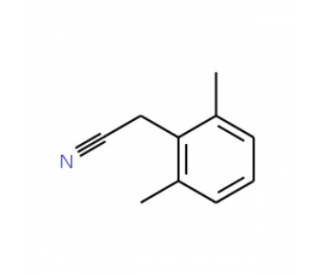詳細(xì)說明
Purity
>95%, by SDS-PAGE under reducing conditions and visualized by Colloidal Coomassie? Blue stain at 5 μg per lane
Endotoxin Level
<1.0 EU per 1 μg of the protein by the LAL method.
Activity
Measured by its ability to phosphorylate adenosine 5'-phosphosulfate (APS). The specific activity is >100 pmol/min/μg, as measured under the described conditions, and is subject to known limitations imposed by a factor of coupling rate (8). See Activity Assay Protocol on www.RnDSystems.com
Source
E. coli-derived Met1-Glu211, with a C-terminal 6-His tag
Accession #
N-terminal Sequence
AnalysisSer2
Predicted Molecular Mass
25 kDa
SDS-PAGE
29-30 kDa, reducing conditions
7176-SK |
| |
Formulation Supplied as a 0.2 μm filtered solution in Tris and NaCl. | ||
Shipping The product is shipped with polar packs. Upon receipt, store it immediately at the temperature recommended below. | ||
Stability & Storage: Use a manual defrost freezer and avoid repeated freeze-thaw cycles.
|
Assay Procedure
Materials
Universal Kinase Activity Kit (Catalog # )
Assay Buffer: 25 mM Tris, 0.15 M NaCl, 10 mM CaCl2, 10 mM MgCl2, pH 7.5
Recombinant P. chrysogenum APS Kinase/APSK (rAPS Kinase) (Catalog # 7176-SK)
Adenosine 5'-phosphosulfate (APS) (Sigma, Catalog # A5508), 1 mM stock in deionized water
96-well Clear Plate (Catalog # )
Plate Reader (Model: SpectraMax Plus by Molecular Devices) or equivalent
Dilute 1 mM Phosphate Standard provided by the Universal Kinase Activity Kit by adding 40 μL of the 1 mM Phosphate Standard to 360 μL of Assay Buffer for a 100 μM stock. This is the first point of the starndard curve.
Continue standard curve by performing six one-half serial dilutions of the 100 μM Phosphate stock in Assay Buffer. The standard curve has a range of 0.078 to 5.0 nmol per well.
Load 50 μL of each dilution of the standard curve into a plate. Include a curve blank containing 50 μL of Assay Buffer.
Dilute rAPS Kinase to 15 ng/μL in Assay Buffer.
Dilute Coupling Phosphatase 4 (supplied in kit) to 10 μg/mL in Assay Buffer.
Dilute APS and ATP to 0.24 mM in Assay Buffer.
Prepare substrate mixture by combining equivalent volumes of 0.24 mM APS and 0.24 mM ATP.
Load 10 μL of the 15 ng/μL rAPS Kinase in triplicate to the plate. Include a control containing 10 μL of Assay Buffer.
Load 10 μL of 10 μg/mL Coupling Phosphatase 4 into wells containing enzyme and Assay Buffer.
Add 30 μL of substrate mixture to the wells, excluding the standard curve.
Seal the plate and incubate at room temperature for 15 minutes.
Add 30 μL of the Malachite Green Reagent A to all wells. Mix briefly.
Add 100 μL of deionized water to all wells. Mix briefly.
Add 30 μL of the Malachite Green Reagent B to all wells. Mix and incubate for 20 minutes at room temperature.
Read plate at 620 nm (absorbance) in endpoint mode.
Calculate specific activity:
Specific Activity (pmol/min/μg) = | Phosphate released* (nmol) x (1000 pmol/nmol) |
| Incubation time (min) x amount of enzyme (μg) |
*Derived from the phosphate standard curve using linear or 4-parameter fitting and adjusted for Control.
Per Reaction:
rAPS Kinase: 0.150 μg
Coupling Phosphatase 4: 0.100 μg
APS: 3600 pmol
ATP: 3600 pmol
Background: APS Kinase/APSK
Sulfur metabolism is essential to all organisms. Inorganic sulfate is sequentially activated by ATP sulfurylase and adenosine 5′?phosphosulfate kinase (APSK). ATP sulfurylase converts ATP to adenosine?5'?phosphosulfate (APS) (1). APSK subsequently phosphorylates APS at the 3’ site to generate 3'?phosphoadenosine?5'?phosphosulfate (PAPS) (2). PAPS is the sulfur donor required for all sulfotransferase reactions in humans and is also the sulfur source for synthesis of cysteine, methionine and glutathione (3). The P. chrysogenum APSK is a homodimer that undergoes a temperature?dependent reversible dissociation into inactive monomers (4). The kinetic mechanism of this enzyme is strictly ordered with ATP bound before APS and PAPS dissociating before MgADP. APS is reported as a potent substrate inhibitor with the formation of a dead?end E·MgADP·APS ternary complex as the cause of the substrate inhibition (5). The recombinant P. chrysogenum APSK is required for in vitro PAPS synthesis (6, 7) and the enzymatic activity was measured using a phosphatase?coupled method (8).
References:
Robbins, P. W. and Lipmann, F. (1958) J. Biol. Chem. 233:686.
MacRae, I.J. et al. (1998) J. Biol. Chem. 273:28583.
Strott, C.A. (2002) Endocr. Rev 23:703.
Renosto, F. et al. (1985) J. Biol. Chem. 260:1535.
Renosto, F. et al. (1991) Arch. Biochem. Biophys. 284:30.
Wu, Z.L. et al. (2002) The FASEB J. 16:539.
Lin, C.H. et al. (1995) J. Am.Chem. Soc. 117:8031.
Wu, Z.L. (2011) PLoS ONE 6(8): e23172.
Long Name:
Adenosine-5'-phosphosulfate 3'-phosphotransferase
Alternate Names:
APS Kinase; APSK











 粵公網(wǎng)安備44196802000105號
粵公網(wǎng)安備44196802000105號